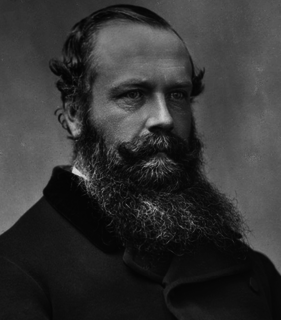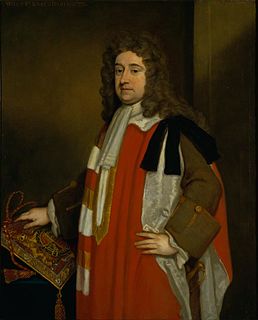
Earl of Longford is a title that has been created twice in the Peerage of Ireland.

Charles Stanley Monck, 4th Viscount Monck was an Irish politician who served as the last governor-general of the Province of Canada and the first Governor General of Canada after Canadian Confederation.
The Peerage of the United Kingdom is one of the five Peerages in the United Kingdom. It comprises most peerages created in the United Kingdom of Great Britain and Ireland after the Acts of Union in 1801, when it replaced the Peerage of Great Britain. New peers continued to be created in the Peerage of Ireland until 1898.

Marquess of Ely, of the County of Wexford, is a title in the Peerage of Ireland. It was created in 1800 for Charles Loftus, 1st Earl of Ely. He was born Charles Tottenham, the son of Sir John Tottenham, 1st Baronet, who had been created a baronet, of Tottenham Green in the County of Wexford, in the Baronetage of Ireland in 1780, by Elizabeth, daughter of Nicholas Loftus, 1st Viscount Loftus, sister and heiress of Henry Loftus, 1st Earl of Ely. In 1783 he succeeded to the Loftus estates on the death of his maternal uncle the Earl of Ely and assumed the same year by Royal licence the surname of Loftus in lieu of his patronymic. In 1785 he was raised to the Peerage of Ireland as Baron Loftus, of Loftus Hall in the County of Wexford. It was sold by the family in 1917 and is today owned by the Quigley family.

Earl of Dartmouth is a title in the Peerage of Great Britain. It was created in 1711 for William Legge, 2nd Baron Dartmouth.

Earl of Powis (Powys) is a title that has been created three times. The first creation came in the Peerage of England in 1674 in favour of William Herbert, 3rd Baron Powis, a descendant of William Herbert, 1st Earl of Pembroke. In 1687, he was further honoured when he was made Marquess of Powis.

Earl of the County of Mayo, usually known simply as Earl of Mayo, is a title in the Peerage of Ireland created, in 1785, for John Bourke, 1st Viscount Mayo. For many years he served as "First Commissioner of Revenue" in Ireland. He had already been created Baron Naas, of Naas in the county of Kildare, in 1776, and Viscount Mayo, of Moneycrower in the county of Mayo, in 1781, also in the Peerage of Ireland.

Earl of Listowel is a title in the Peerage of Ireland. It was created in 1822 for William Hare, 1st Viscount Ennismore and Listowel, who had earlier represented Cork City and Athy in the Irish House of Commons.

Earl of Normanton is a title in the Peerage of Ireland. It was created in 1806 for Charles Agar, 1st Viscount Somerton, Archbishop of Dublin. He had already been created Baron Somerton, of Somerton in the County of Kilkenny, in 1795 and Viscount Somerton, of Somerton in the County of Kilkenny, in 1800, also in the Peerage of Ireland. Lord Normanton sat in the House of Lords from 1800 to 1809 as one of the 28 original Irish Representative Peers.

Earl of Ranfurly, of Dungannon in the County of Tyrone, a title in the Peerage of Ireland, was created in 1831 for Thomas Knox, 2nd Viscount Northland. He had earlier represented County Tyrone in the House of Commons, and had already been created Baron Ranfurly, of Ramphorlie in the County of Renfrew, in the Peerage of the United Kingdom in 1826. Knox was the eldest son of Thomas Knox, who represented Dungannon in the Irish House of Commons. He was created Baron Welles, of Dungannon in the County of Tyrone, in 1781, and Viscount Northland, of Dungannon in the County of Tyrone, in 1791. Both titles were in the Peerage of Ireland. Lord Northland also sat in the British House of Lords as one of the 28 original Irish Representative Peers.

Earl of Drogheda is a title in the Peerage of Ireland. It was created in 1661 for The 3rd Viscount Moore.

Earl Howe is a title that has been created twice in British history, for members of the Howe and Curzon-Howe family respectively. The first creation, in the Peerage of Great Britain, was in 1788 for Richard Howe, but became extinct on his death in 1799. The second creation, in the Peerage of the United Kingdom was in 1821 for Richard Curzon, and remains extant.

Baron Farnham, of Farnham in the County of Cavan, is a title in the Peerage of Ireland. It was created in 1756 for John Maxwell, who had previously represented Cavan Borough in the Irish House of Commons. John Maxwell's son, the second Baron, was created Viscount Farnham in 1760 and Earl of Farnham in 1763. Both titles were in the Peerage of Ireland but became extinct when he died childless in 1779. His brother and successor, the third Baron, was again created Viscount Farnham in 1781 and Earl of Farnham in 1785. These titles were also in the Peerage of Ireland. His son, the second Earl, sat in the House of Lords as an Irish Representative Peer from 1816 to 1823. However, he had no children and on his death in 1823 the viscountcy and earldom became extinct.

Viscount Clifden, of Gowran in the County of Kilkenny, Ireland, was a title in the Peerage of Ireland. It was created on 12 January 1781 for James Agar, 1st Baron Clifden. He had already been created Baron Clifden, of Gowran in the County of Kilkenny, in 1776, also in the Peerage of Ireland. The Viscounts also held the titles of Baron Mendip in the Peerage of Great Britain from 1802 to 1974 and Baron Dover from 1836 to 1899, when this title became extinct, and Baron Robartes from 1899 to 1974, when this title became extinct, the two latter titles which were in the Peerage of the United Kingdom. The interrelated histories of the peerages follows below.
William Power Keating Trench, 1st Earl of Clancarty was an Irish aristocrat and politician and later United Kingdom statesman at the time of the Act of Union. His family, through his son Richard, became prominent and hereditary members of the Netherlands' nobility.

Arthur Saunders Gore, 2nd Earl of Arran KP, PC (Ire) styled The Honourable Arthur Gore from 1758 to 1762 and Viscount Sudley from 1762 to 1773, was an Irish peer and politician.
There have been six baronetcies created for persons with the surname Brooke, one in the Baronetage of England, one in the Baronetage of Ireland and four in the Baronetage of the United Kingdom. As of 2015 four of the creations are extant, though one has been subsumed into a peerage.
Charles Stanley Monck, 1st Viscount Monck, was born in 1754 and died on 9 June 1802. He was the 1st son of Thomas Monck MP, by his wife Judith Mason, daughter of Robert Mason, of Mason Brook
The Rt Hon. Richard Butler, 1st Earl of Glengall, known as The 10th Baron Cahir before 1816, was an Irish peer.










